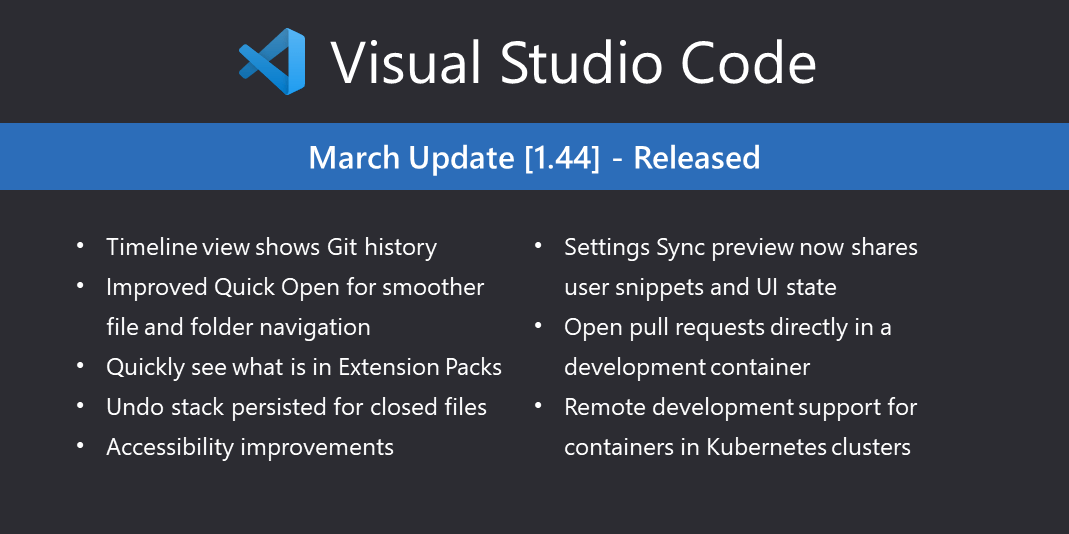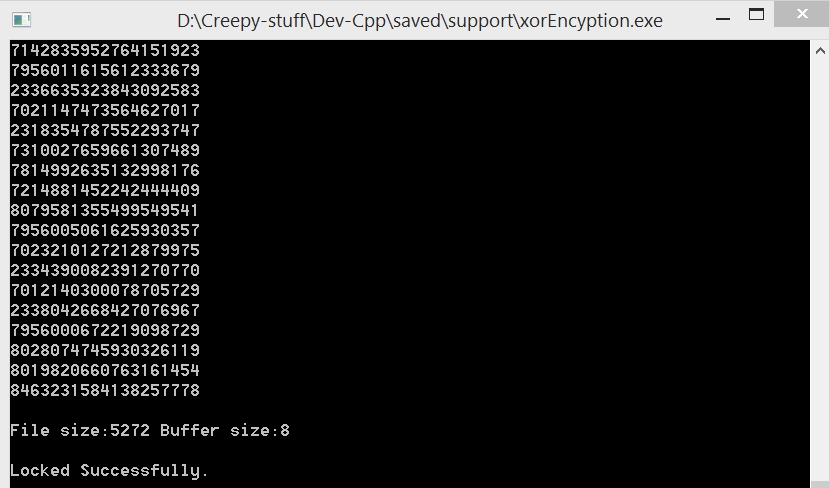
- To decrypt the file, we'll follow the same process but using FileDecrypt instead. This method expects as first argument the path to the encrypted file and as second argument the path where the decrypted file should be placed. As third argument you need to provide the string that was used to encrypt the file originally.
- I am making a C console application where the user can encrypt and decrypt text. So far, I have successfully made the encryption part, but am not quite sure how to make the decryption part. For example: abcb - 128.70.88.70. But I can't make it go back to abcb. Here is my code so far.
- Example C Program: Encrypting a File.; 7 minutes to read; l; v; D; d; m; In this article. The following example encrypts a data file. The example interactively requests the name of the file that contains plaintext to be encrypted and the name of a file where the encrypted data is to be written. The example prompts the user for the names of an input file and an output file.
Dev C File encryption and decryption code file. How to encrypt and decrypt a file using c language. Encryption decryption problem. Transferring encrypted file using. We are not discussing here how WinRar does that, but we will be discussing how you can create a simple application in C which will allow you to encrypt your text files in a way after which it will just look like a trashed content. Encryption techniques are not new, they have begun thousands of years ago.
Information security on PC becomes more and more popular, so I want to cover some issues of this topic – in particular, the using of ciphers to prevent data stealing from a physically removed hard disk.
Cipher is the sequence of steps to transform original text (plain text) to cipher text, which completely can’t be read by unauthorized person or the efforts to crack it will cost more than the information in the plain text costs.

Ciphers are documented and well-known, but the problem is how to make the good implementation, or in our situation, how to find and use the open source library. I will explain what advantages OpenSSL library has and how to use it.
File encryption methods
You can secure single files or folders by the user-mode applications, which will encrypt or decrypt information by your command. You can also use the complex kernel-mode on-the-fly encryption solutions based on the virtual drives (legacy disk device), encrypted file systems, file system filters and storage filter driver (full disk encryption), which work synchronously with OS read/write requests.
Fig. 1. Application levels to encrypt information.
Cipher types by type of the key:
- Symmetric key algorithms - the same key is used for encryption and decryption.
- Asymmetric key algorithms - two different keys are used for encryption and decryption.
Symmetric key ciphers are preferable because encryption and decryption are performed by a single solution. At the same time, you should remember that the process can be successful only if nobody can get access to the processed data and the sources of the solution (this should be guaranteed by the solution itself).
Cipher types by type of input data:

- Block ciphers – encrypt and decrypt blocks of data of fixed size;
- Stream ciphers - encrypt and decrypt continuous streams of data (message).
lock ciphers are preferable because of the way the data is stored on HDD: it is divided into the sectors of fixed size.

In this article, I want to describe the problem of cipher implementation in file encryption.
For each kind of security application we should choose cipher and, in case of the file encryption, corresponding block cipher mode. Each case requires different cipher mode:
- Legacy Disk Device and File System level could use any block cipher, because on this level, read and write requests are aligned to the sector size and you control and have access to all data. These disk encryption solutions use XTS and CMC cipher mode.
- File System filters have less freedom to work with files, because of permissions, which are set on file creation by user or system. Also, on this level you closely connected to pure documented behavior of the cache manager and file system. Any wrong action with data, data length or permissions could cause errors or unexpected behavior. The best cipher mode for this purpose is CTR, which offers real random access to the file data. It allows you to encrypt or decrypt only the current chunk of non-granulated data, and only it.
Encrypt Decrypt C++
- User-mode applications can use any block cipher, but while using ECB or CBC, the applications should store the header in files, which contains the real file size, and should granulate the file size to the block size of cipher. Another approach is to use CTR, CFB or OFB. They differ only by error propagation in changed cipher text, so I would prefer CTR.
OpenSSL
Crypto++ library is well-known, use of Crypto++ is described very well in the article “Applied Crypto++: Block Ciphers”. This library is very useful and has a big amount of ciphers and wrappers, but it also has a couple of disadvantages, which can prevent its usage:
- Porting through compilers (different msvc and gcc)
- Problems with using in driver projects
I would like to introduce the OpenSSL implementation, which has solid C style easily portable for different compilers and platforms.
Main folders for our purpose are crypto and include. The crypto folder contains all ciphers and the include folder contains library headers with definitions and constants:
Fig. 2. Listing of OpenSSL folder.
Each cipher has its own subfolder in the crypto folder. Implementation of each mode for the cipher is located in the same folder, but some ciphers use common cipher mode implementation, which can be found in the modes folder. You can use all of them or easily copy a folder with the required algorithm and use it separately. I pick the AES cipher:
Encrypt C++ Code
Fig. 3. Listing of crypto folder.
You should copy files to the new library project, change some include paths and build the library with AES cipher. See the example attached to the article.
To use AES cipher you should initialize AES key from the initialization vector with the help of AES_set_encrypt_key:
